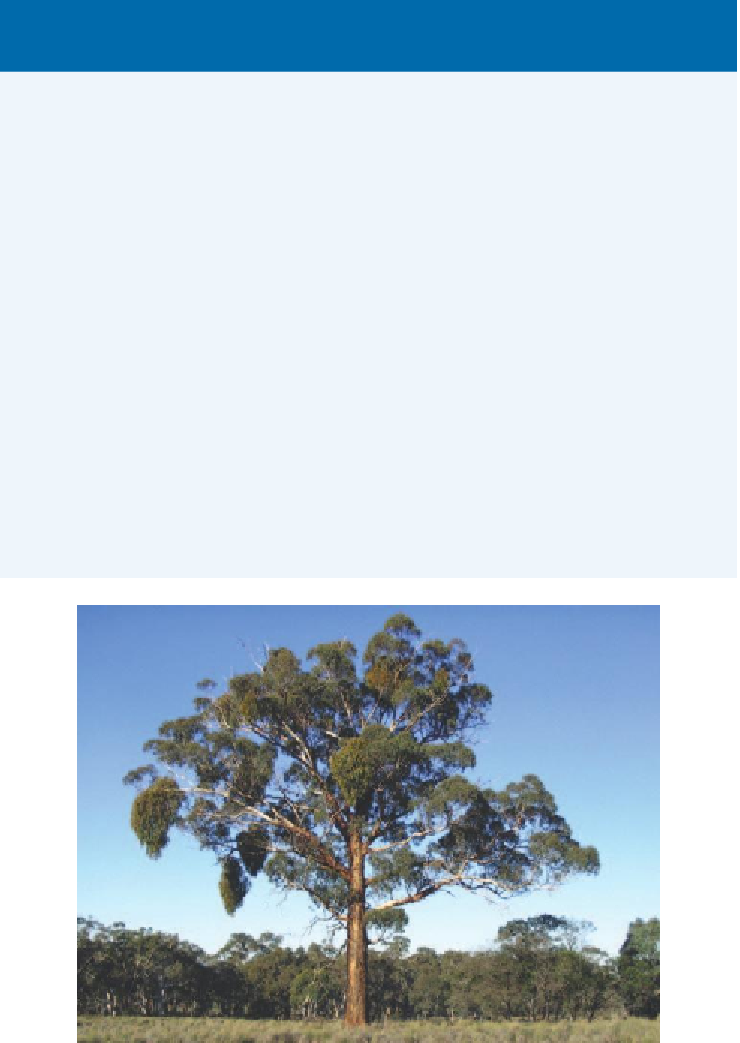Biology Reference
In-Depth Information
Box 4.2. Biodiversity values of scattered paddock trees for woodland
ecosystems
Scattered paddock trees have many important values for wildlife on farms. They:
●
contribute to the range of kinds of vegetation cover on farms. This, in turn, is a
highly significant factor influencing bird species richness on farms
15
●
increase the suitability of adjacent woodland remnants for declining woodland
birds (e.g. the Brown Treecreeper, Jacky Winter, Black-chinned Honeyeater)
16
●
provide habitat for a very high diversity of woodland invertebrates
17
●
act as stepping stones for the movement of birds through agricultural
landscapes
7, 18
●
provide habitat for a range of species of reptiles such as the Marbled Gecko and
Carnaby's Wall Skink
19
●
provide key nesting trees for the Superb Parrot
14
●
provide nesting trees and feeding trees for the Squirrel Glider
11, 20
●
provide nesting and roosting trees for bats
21
●
provide places around which young trees can regenerate naturally
10, 22
●
provide sites around which to establish plantings
23
(see Chapter 3)
●
increase the suitability of adjacent plantings for the White-browed Woodswallow
and the White-plumed Honeyeater
23
(see Chapter 3)
●
raise overall bird species richness, as well as the richness of woodland bird spe-
cialists, to levels comparable to denser woodland patches.
24
Figure 4.4:
A large paddock tree can provide many types of shelter and food resources for wildlife. (Photo by
Damian Michael)

